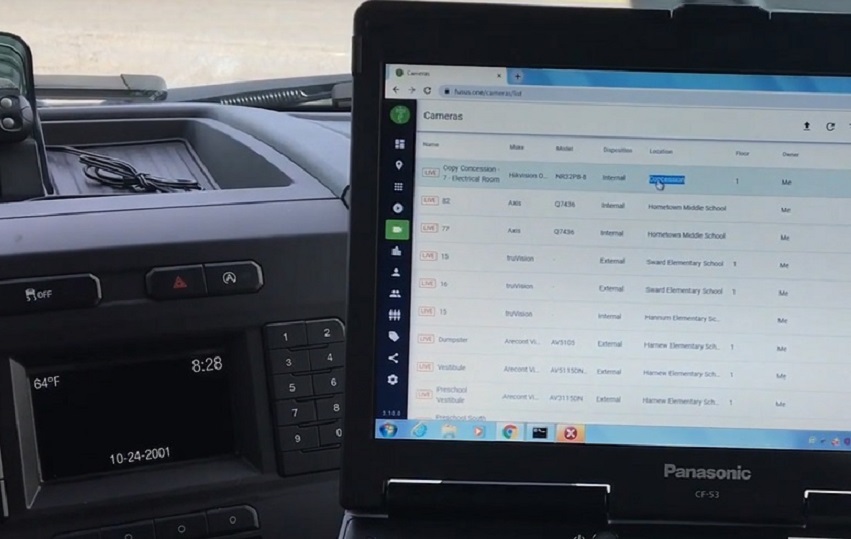This post is also available in:
 עברית (Hebrew)
עברית (Hebrew)
First responders often lack information when dealing with emergencies. Despite the thousands of cameras we see on the street, in businesses, at the bank, even at work, those cameras are not typically accessible to law enforcement — unless police have probable cause to obtain a warrant for the video. For example, when there’s an active shooter at a school, the vast majority of school videos are not accessible to law enforcement.
Moreover, most law enforcement don’t have access to a single interface with video streaming in real-time during emergencies.
FususONE developed by Fusus is a software platform that consolidates public and private video, metadata, and geolocator feeds into a single view, providing situational awareness to Police, EMS, Fire & Public Works personnel on the scene.
The company’s fususCORE device is dropped onto any network in any building, anywhere in the city. Within seconds it detects, analyzes and connects to every camera on the building’s network and builds a separate unified feed to the customer’s web-based account.
By combining public and private video sources, first responders have a better chance of knowing what’s happening at a scene in real-time, rather than relying on the limited information from 911 callers.
All of law enforcement’s access on the Fusus system is tracked, and businesses and organizations can decide whether to allow constant streaming to the Fusus system or only when a panic alert is triggered in the event of an emergency, said Chris Lindenau, CEO. For example, public cameras may stream 24/7, while schools or businesses may limit video sharing to emergencies.
The idea for Fusus came to Lindenau while he was still working on the bodycam side of the business and through his discussions with law enforcement. He discovered the city of Minneapolis had built a platform to filter in hundreds of video sources for the Super Bowl in 2018.
Referring to privacy concerns, he stressed that the technology sector is constantly trying to achieve the balance between what is enough information to save lives and too much information, which can infringe on people’s privacy rights.


























